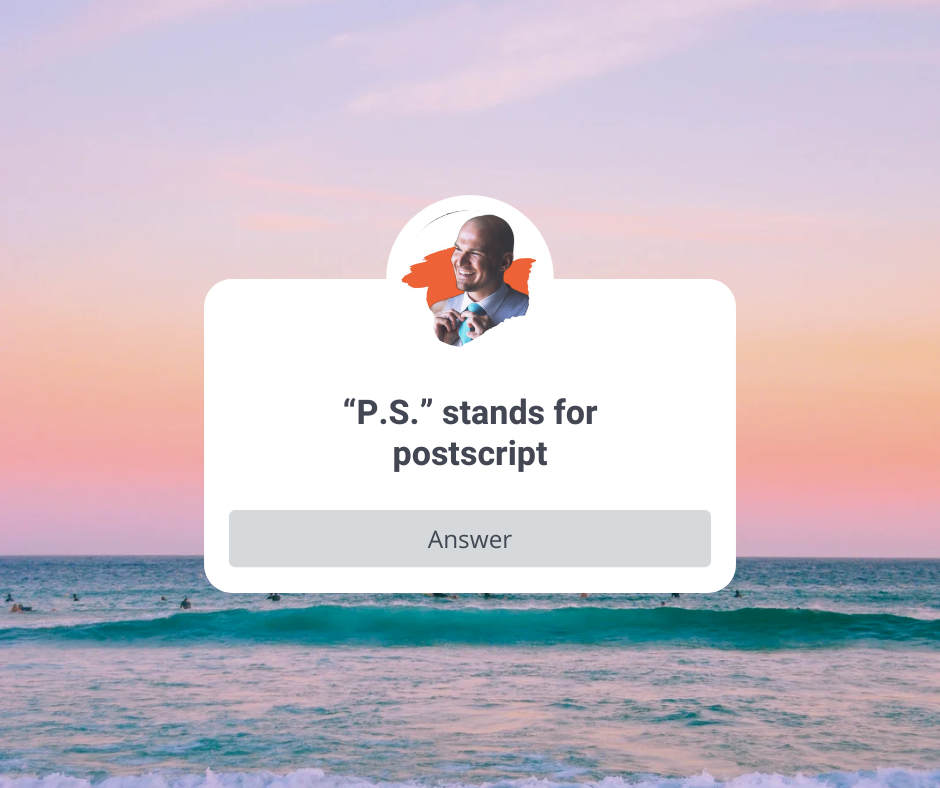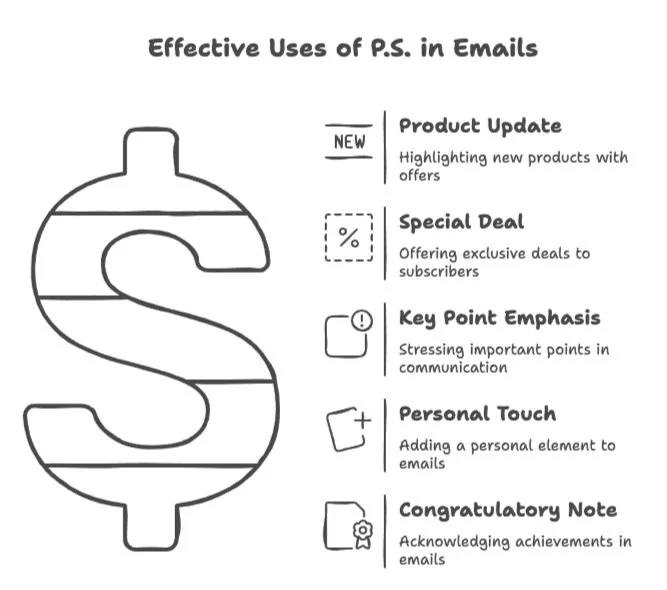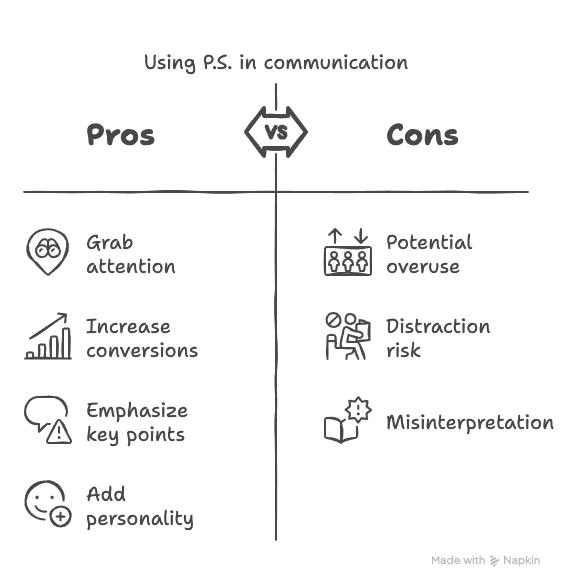PS: Meaning and How to Use It
What does “P.S.” mean in a letter or email, and how should you use it?
When you’re writing an email, striking the right voice and tone is important. Whether you’re sending a casual note to a friend or a marketing message to customers, you want to make a good impression.
One element you might notice at the end of many letters or emails is the P.S. (postscript).
But what does P.S. mean, and when is it appropriate to use one?
In this comprehensive guide, we’ll cover the meaning of “PS,” its origin, why and when to use a P.S., how to format it correctly, examples of P.S. lines in action, and why the P.S. is still relevant in modern email marketing.
By the end, you’ll know exactly how to use P.S. to add impact and flair to your messages.
What Does “P.S.” Mean?
“P.S.” stands for postscript, which comes from the Latin term postscriptum, literally meaning “written after.” In other words, a postscript is an additional thought written after the main body of a letter or email. Traditionally, you add a P.S. at the very end of your message (after your signature) to include something you forgot or a last-minute note.
Originally, in the days of handwritten or typed letters, you couldn’t easily go back and edit what you’d already written. The postscript was a practical solution for adding an afterthought without starting the whole letter over. People have used P.S. for centuries, and it became so common that it’s continued into the digital age even when it’s no longer technically necessary. Nowadays, with emails and word processors, you could just insert another line into the main text, but writers still use P.S. in emails to convey a sense of informality, to emphasize a point, or simply to add a friendly afterthought.
It’s worth noting that PS isn’t only used in letters or emails. You might see it in text messages, blog posts, or social media, often to insert a humorous or personal aside. However, its core meaning remains the same: it signals to the reader “here’s an extra note after the main message.”
Why and When Should You Use a P.S.?
Not every message needs a P.S. In fact, overusing it can make it lose its effect. So, what is the purpose of a P.S., and when is it most useful?
Essentially, a postscript lets you include additional information that isn’t directly part of your main content.
It’s like telling the reader, “By the way, here’s one more quick thing…” This extra remark might be a witty afterthought, a personal note, or a key point you want to highlight one more time.
As Grammarly explains, a P.S. can reinforce your message or add flair to a note, especially in casual or marketing contexts. Consider using a P.S. in situations like these:
Adding a minor detail or afterthought
Making a friendly aside
Highlighting an offer or call-to-action
Reinforcing an important message
On the other hand, don’t use a P.S. for anything that should be in the main body of your message. If the information is crucial or requires more than a sentence or two, it shouldn’t be relegated to a postscript.
If you’re in doubt, HubSpot’s guide on how to write professional emails is a great resource to help determine what belongs in the body versus what works best as a P.S.
How to Format “P.S.” in Emails and Letters
Formatting your P.S. correctly is essential for professionalism and clarity. Here’s how to do it:
Place it at the end, after your signature.
Use “PS” or “P.S.” – both are acceptable. According to Grammarly, both styles are correct, and you should simply be consistent.
Don’t add a comma after “P.S.”
Use “P.P.S.” if you need a second postscript, but this should be rare in professional messages.
Keep it brief. If it’s too long, it should be part of the main body.
Examples: How to Use P.S. in Emails (5 Effective Uses)
1. After a Product Update or Announcement
P.S. Curious about our latest products? Click here to see the new lineup and grab an exclusive 10% off for being a subscriber!
2. Offering a Special Bonus or Deal
P.S. As a special thank-you, all orders today come with free priority shipping – just for our email subscribers. Don’t miss out!
3. Emphasizing a Key Point to a Colleague
P.S. The bottom line is we need to reduce overhead costs so we can invest more in what’s working. This is our top priority moving forward.
4. Adding a Personal Touch
P.S. By the way, I hope you’ve been enjoying the sunny weather! After all these rainy days, a bit of sunshine can really lift the mood. ☀️
5. Including a Congratulatory Note
P.S. I heard the great news about your promotion – congratulations! You’ve earned it through all your hard work. 🎉
Is Using P.S. in Emails Outdated?
Absolutely not. Far from being obsolete, the P.S. remains one of the most-read parts of any email. According to Mailchimp’s email writing tips, readers often skim and go straight to the end of a message – making the P.S. prime real estate for important or engaging content.
You can also use the P.S. to:
Grab attention: People’s eyes are naturally drawn to the P.S.
Increase conversions: Mailchimp’s email newsletter examples show that a strategically placed P.S. with a call-to-action can increase click-through rates.
Emphasize key points: Reinforce your core message in a clear, concise way.
Add personality: Make your brand voice shine by closing with something warm or witty.
If you’re incorporating P.S. messages in your email campaigns as part of a broader digital strategy, don’t overlook the power of local SEO to further improve your engagement. Shaun Savvy’s Local SEO Services in Buffalo can help ensure your emails and content reach the right audience in your community.
Key Takeaways
PS means postscript, from Latin postscriptum, meaning “written after.”
It’s useful for adding short, supplementary notes after your email signature.
Both “PS” and “P.S.” are correct, as long as you use one style consistently.
The P.S. is a powerful tool in email marketing: it grabs attention, reinforces messages, and humanizes your communication.
External sources like Grammarly, HubSpot, and Mailchimp all agree: the postscript still plays a major role in effective digital communication.
Use your P.S. wisely – it may just be the most important line in your next email.





